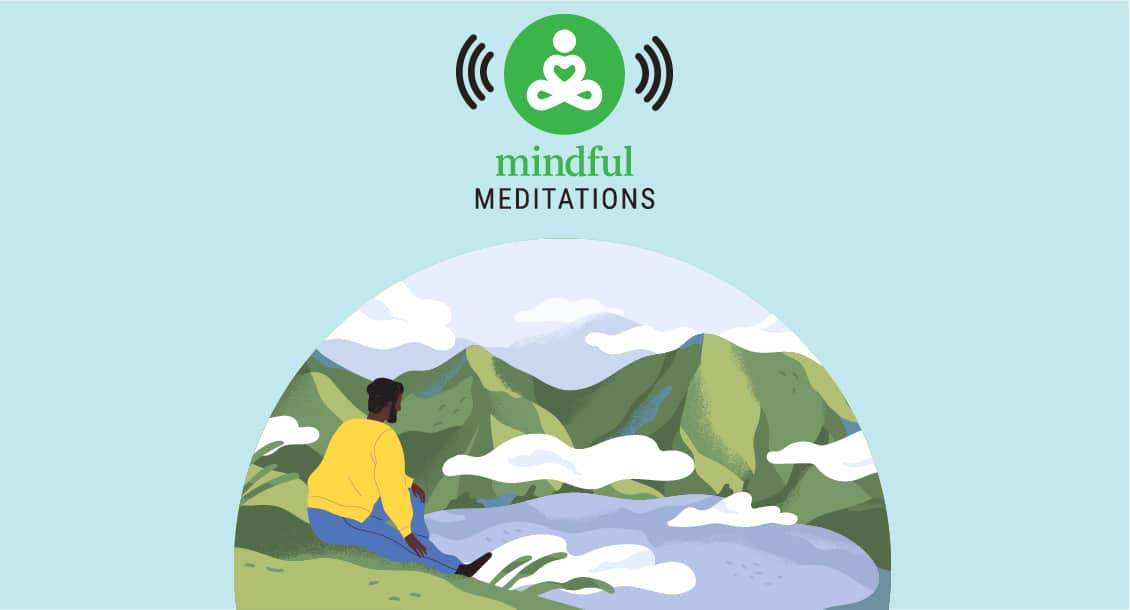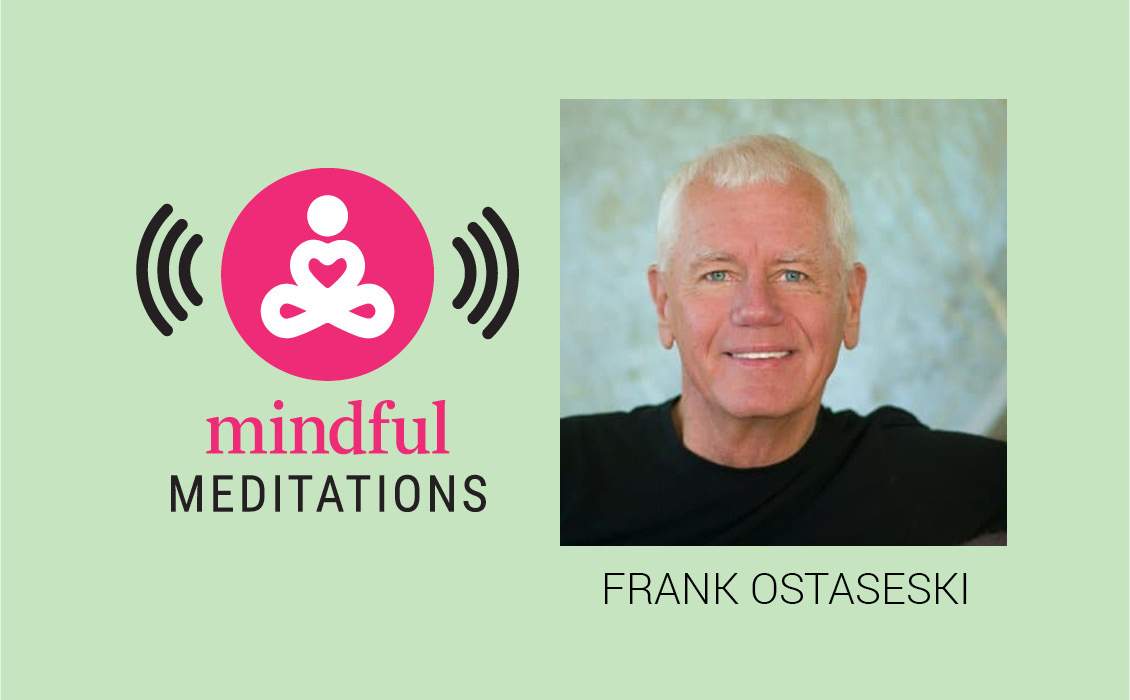In this particular meditation we’re going to explore the relationship of love and nature, in particular, opening our hearts to the natural world.
We live on this beautiful planet, this beautiful earth, and you could say we’re here because of love—because of the love that comes from nature and the abundance of this earth. And I think for many of us, one of the easiest places that our heart is touched and is opened, where we feel a sense of connection and kinship and love is in nature. Whether it’s just looking up at the night sky, seeing a bird fly by our window, or when we’re more deeply in the woods or walking in a park—wherever we may find ourselves in a natural setting.
Moving Beyond Our Sense of Self
And so with loving-kindness practice, what’s most helpful is to find the most supportive place or environment that allows you to feel that sense of connection. So ideally, you’re doing this practice in a natural setting such as a park, or you could be sitting on your deck or in a garden, or out by the ocean where you feel a sense of warmth or love or connection with the world around you.
You don’t have to be physically in nature, however, to do this practice. You might be sitting at home, but you may be recollecting times you’ve been in nature, in a forest, touched by having had some contact with an animal, having been near the ocean, or with a view of a sunset or the night sky. And in reflecting about that, it’s allowing you to feel that sense of connection. Because what loving-kindness practice does is open the heart; it takes us beyond our small sense of self. And, of course, being out in nature, a sense of connection is immediately apparent: we can touch in with a wider sphere of experience and influence. It can take us out of that prison, that sometimes constricted sense of self, where we feel small or separate or isolated.
So the loving-kindness practice itself, as well as being in nature, is a way to allow the heart to open, to soften, and to attune and abide more naturally in a sense of open-hearted connection.
Opening Our Hearts to the Natural World
Watch the video:
Listen to the Audio:
Opening Our Hearts to the Natural World
Follow the Practice:
- First, finding a posture where you can feel comfortable, where you feel safe in the environment you’re in. You can close your eyes for a few moments and just let your attention settle. First sensing your body: sensing the physical body touching the ground. Feel your connection with the earth. Feel the support of the land, of the earth, under you. It’s always there: present, supportive, nourishing.
- And as you sense your breath, consider that with each inhale you’re taking in oxygen that’s released from leaves, plants, plankton. And each exhale is releasing carbon dioxide that’s reabsorbed by plant and tree life either nearby or far away. Sense how it’s just that simple breath that’s connecting you to this vast web of life. Feeling any sense of appreciation as you inhale; that the life—trees and grasses—sustains you, nourishes you. And with the exhale, maybe there’s a sense of well-wishing, warmth, love, appreciation to all the photo-synthesizing life that allows you and all breathing beings to live, to survive.
- Now, taking a moment to reflect on a time when you were recently touched by some experience in nature—something that moved you. Perhaps it was an encounter with an animal or bird. Perhaps it was a tree in a forest, or an ocean or the night sky. Recalling that experience, and then extending your heart with a sense of warmth and kindness, love, well-wishing, toward whatever it was that touched you. Perhaps you’re radiating a sense of kindness, friendliness.
- And if you find yourself sitting outside, you may choose to open your eyes and look around. Take in the trees or the grasses or the desert, or whatever landscape is around you. And, again, extending a sense of warmth, friendliness, love. You can do that through phrases that express your heart’s wish for life: May these grasses, may these trees, may all the beings that live here—animals, birds, insects—be healthy. May they be safe and protected.
- Use whatever words come to you that express your heart’s wish for the life all around you. Say these words silently. Repeat them a few times. They can be inspired by whatever is around you, or whatever comes into your mind and heart. Consider whatever part of nature touches you—to whatever you wish to extend this sense of warmth and loving-kindness. May all the beings on this earth be safe and protected from harm. May all endangered species, and all species, be safe. May all creatures be happy and thrive. May all life be healthy, vital.
- So, sensing into the life around you, or as you call into your mind’s eye, radiating a sense of warmth and kindness. You may be sensing into how this experience of love is a process of giving and receiving. You may be feeling how loved or touched you are by the natural world, and how the heart naturally wants to respond with offering loving-kindness, well-wishing.
- And, of course, including oneself as part of the Earth’s moving surface, and including all peoples everywhere: those near and far, those you know and don’t know. May all these life forms, or beings, or peoples, or creatures everywhere be safe from harm, be protected, live with health, with happiness, with safety.
- So, in these last moments, allow the heart to radiate in all directions—to all elements of this earth, to the life that lives here.
As you end this practice, you can take this heartfulness anywhere because this heartfulness is the nature of your own heart. The nature of the heart is to love, to be kind and compassionate. So, whether you’re moving about in the cityscape, or out in nature, see if you can extend this quality of heartfulness, this kindness through well-wishing of phrases, but also just through a sense of friendliness and warmth to yourself, to each other, and particularly to the earth on which we live and the natural settings in which we might move.
Know that you can take this practice, and call it to mind, anywhere. But it’s particularly fun and enjoyable when you’re outside walking or hiking. We tend to go out into nature to receive, but we’re always in relationship and capable of extending that sense of love and heartfulness back to that which is touching us.
more mindful meditations
Fearless Open-Hearted Awareness with Frank Ostaseski
In this four-part series, you’ll explore your relationship to endings without any judgment or criticality.
Read More
Nourish Compassion with Vinny Ferraro
In this four-part series, you’ll discover the power of compassion and explore how it can help you connect more deeply with both yourself and others.
Read More





